Most Expensive Cities to Cool Your Home
As summer temperatures climb, the cost of staying cool can quickly become a burden for many homeowners. Our latest research explores the most and least expensive cities to cool your home, providing insights into why these differences exist and what they mean for residents.
By analyzing electricity rates, home sizes, local climates, and energy efficiency, our findings shed light on the financial impact of keeping your home comfortable during the hottest months of the year. Whether you’re a current homeowner or considering a move, this article offers valuable knowledge to help you make informed decisions about how to manage your energy expenses.
Key Takeaways
- Indio, California; Bakersfield, California; and McAllen, Texas, are the most expensive cities to cool your home in the US.
- Anchorage, Alaska; Denver, Colorado; and Seattle, Washington, are the least expensive cities to cool your home in the US.
- McAllen, Texas, is the hottest city in the US, with a 99.49 (out of 100) heat wave risk score and 677 days with a maximum temperature over 85°F in the last 3 years.
- Flint, Michigan, has the highest electricity cost-to-income ratio in the US (5.86%), based on the average energy consumption of a home in the US and the average household income in Flint.
- McAllen is the most expensive city in Texas to cool your home, while Amarillo is the least expensive.
Home-Cooling Costs Across the US
Our first section explores the extremes, highlighting where residents face the highest and lowest expenses for keeping their homes cool during the sweltering summer months. Each city was scored out of 100 possible points.
Indio, California; Bakersfield, California; and McAllen, Texas, were the most expensive cities in the US to cool a home. These cities faced higher cooling costs due to a combination of elevated electricity rates, larger home sizes, and intense heat.
McAllen, Texas, stood out as the hottest city in the country, with a 99.49 heat wave risk score. Over the past three years, McAllen experienced 677 days with maximum temperatures exceeding 85°F. Last year, McAllen also broke its previous daily heat record set in 2018 when it reached 106°F in 2023.
Conversely, Anchorage, Alaska; Denver, Colorado; and Seattle, Washington, had the lowest cooling expenses. These cities benefit from cooler summers and lower electricity rates, making them the least costly places to keep cool.
On the other end of the spectrum, Flint, Michigan, had the highest electricity cost-to-income ratio in the US at 5.86%. This means they spent a larger portion of their income on energy compared to other parts of the country. This figure reflects the significant burden on Flint residents, whose average household income is $47,221 and the poverty rate is over 33%.
Home-Cooling Costs in Texas
Next, we rank home-cooling expenses and energy efficiency across Texas and look at how home size impacts electricity costs.
McAllen topped the list as the most expensive city in the state for home cooling, while Amarillo residents enjoyed the lowest expenses. Brownsville had the highest electricity cost-to-income ratio in Texas, with residents spending 3.1% of their income on electricity.
In terms of home size, the Dallas-Forth Worth metroplex stood out. Plano, McKinney, and Frisco boasted the largest average home sizes in the state, each averaging 2,547 square feet. While these spacious homes offer comfort, they also contribute to higher overall cooling expenses.
In contrast, Austin emerged as the most energy-efficient city in Texas. This distinction reflects the city’s commitment to energy-saving practices, which help reduce the financial burden of keeping homes cool despite the state’s notoriously hot climate.
Making Smart Choices for Your Energy Needs
We found stark contrasts in cooling costs across the US, with some cities placing a heavier financial burden on residents than others. From the sweltering heat of McAllen to the energy-efficient practices in Austin, it’s clear that where you live can significantly influence how much you pay to stay cool.
Understanding these disparities can help homeowners take proactive steps to reduce their energy costs and make informed choices when considering a new home. As the climate continues to change, being aware of these factors will only become more critical. Stay cool, stay informed, and consider your options.
Methodology
For this study, we generated a meta-ranking to determine the most expensive cities in the US and Texas to cool a home from among the 230 most populous US cities nationwide. We leveraged the following data points with associated weighting, measurements, and sources to create this ranking:
- Heat (50%)
- Number of days with a maximum temperature over 85°F in the last three years (Open-Mateo)
- Heat wave risk score (FEMA National Risk Index)
- Electricity cost-to-income ratio (25%)
- Average house size (15%) (Realtor.com)
- City energy efficiency (10%) (ACEEE City Clean Energy Scorecard)
- Unranked cities did not appear on the scorecard
About Payless Power
Committed to providing energy solutions that fit every budget, Payless Power offers competitive pricing on prepaid and traditional electricity plans. Customers can enjoy a consistent power supply without worrying about credit history or unexpected costs.
Fair Use Statement
Noncommercial reuse of these materials is permitted, provided you cite this page as the source.
What our customers are saying
See why our power customers say we're the best electricity provider in Texas!
I was worried about getting electricity for my home through a prepaid company. I was calling around to see different rates then going through all the hassle of credit checks while dropping points each…
I have been with this company for several years and have been very happy since. Even when I moved, they made my usually stressful situation very easy and carefree. I recommend them to everyone that I…
I have enjoyed the service for 2 years now. In the beginning this service was planned to be temporary but with the service being so effective for me i decided to keep it for the long haul. I’m a happy customer.










